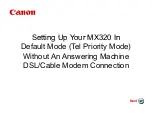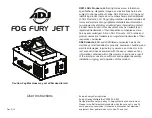
Printing (PC)
48
— High quality envelopes of 90
g
/m
2
(24 lb.) paper,
— Envelopes that have thin sharply creased leading
edges, and
— Envelopes that have diagonal seems as shown right.
Envelopes
●
You can load up to 10 envelopes of 90
g
/m
2
(24 lb.)
paper at a time for printing.
●
Remove each envelope after printing.
●
Wrinkles may occur in some cases, even if high quality
envelopes are used.
●
Avoid printing in high humidity, above 70% relative
humidity (RH). High humidity may cause the envelope to
curl, pick up excess toner or seal the envelope.
●
Avoid printing below 10 °C (50 °F) with less than 30% RH,
or it may cause light printing.
●
Store envelopes away from moisture and humidity, where
they can lay flat and their edges will not be bent or
damaged. The humidity should not exceed 70% RH.
Do not use envelopes with any of the following
characteristics (using these may result in paper jams):
●
Irregularly shaped envelopes
●
Envelopes with curls, wrinkles, nicks, twists,
dog-ears or other damage
●
Envelopes with side seam construction
●
Highly textured envelopes, or with extremely
shiny surfaces
●
Envelopes that seal by removing a peel-off strip
●
Envelopes with more than one flap to be sealed
●
Self-adhesive envelopes
●
Envelopes that are baggy or not sharply creased
●
Embossed envelopes
●
Envelopes that have previously been printed on
●
Envelopes that include cotton and/or fiber material
Side seam
construction
Peel-off strip
Multiple flaps
Twist
Curl
Bent-edge
Wave
Dog-ear
Self adhesive
Do not attempt to print on any of the following types of
envelopes (these may cause damage to the fax machine):
●
Envelopes with clasps, snaps or tie strings
●
Envelopes with transparent windows
●
Envelopes that use encapsulated types of adhesive that do
not require moistening but rely on pressure to seal them
Clasp
Transparent window
Insert envelopes
as shown.
Adjust the
recording
paper
guides.
Use envelopes designed for laser printing. We recommend the following:
















































